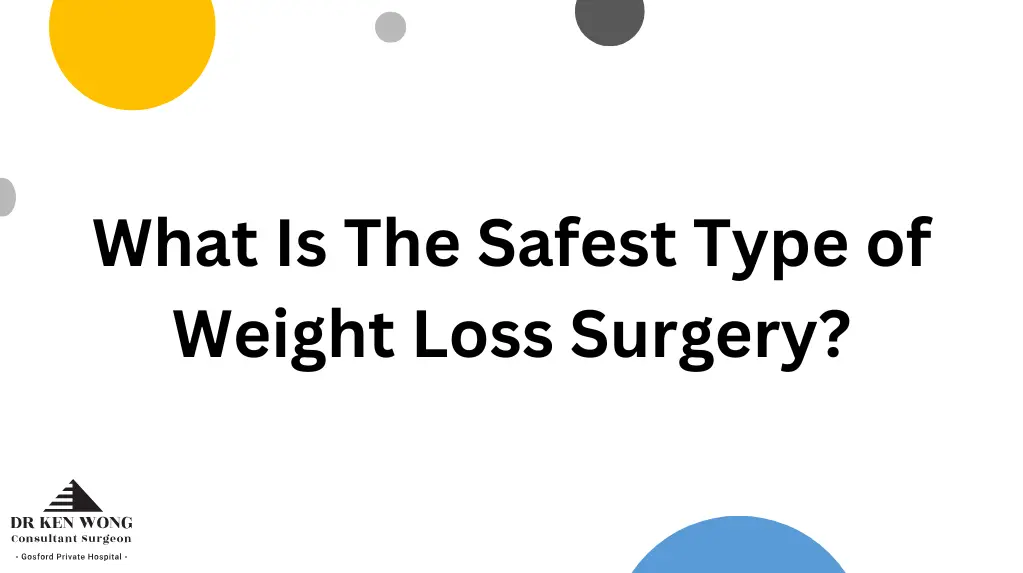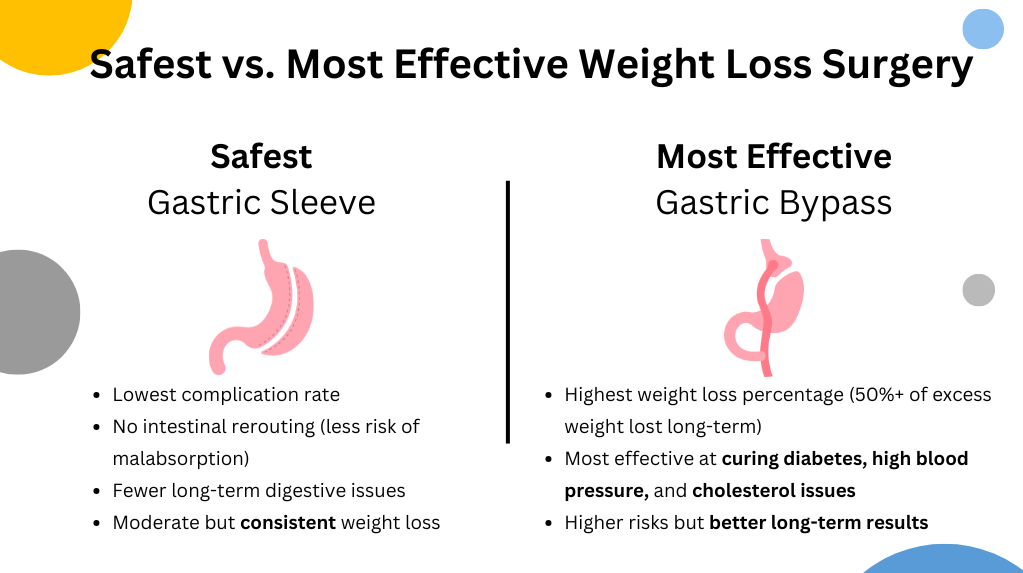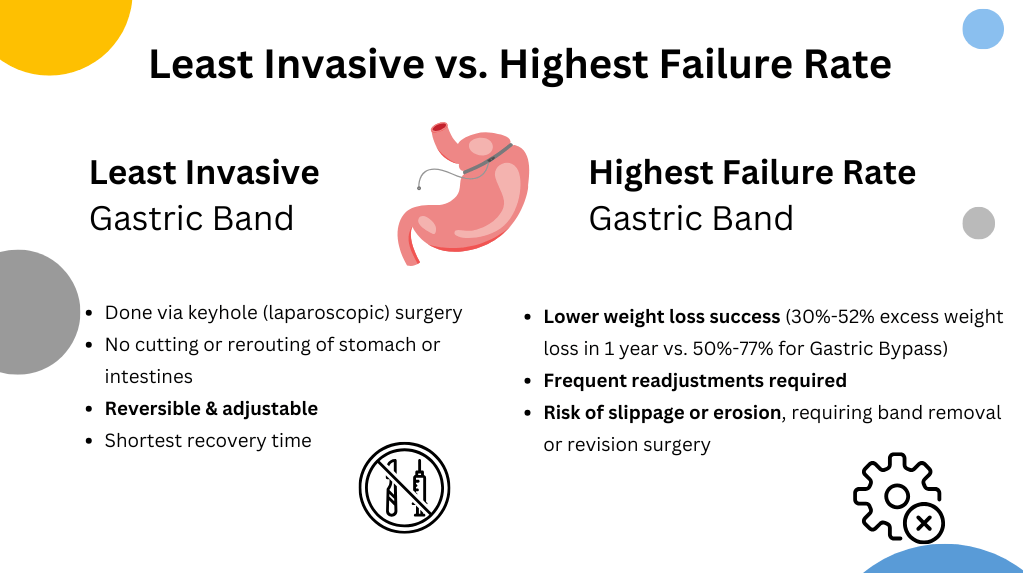
Weight loss surgery, or bariatric surgery, is specifically designed to help those with obesity to manage excessive weight and obesity-related health conditions. Weight loss surgeries are only carried out when diet and exercise have not been effective, or when an individual has weight-related health problems, like diabetes and high blood pressure.
Weight loss surgery is very effective - but as with any surgery, there are risks involved. Some procedures are more extensive, and therefore may have higher risks involved. So, which is the safest type of weight loss surgery? In this article, we delve into the different types of weight loss surgery and outline the safest and most effective option.
Most common types of weight loss surgery
There are different types of bariatric weight loss surgeries performed to help with weight loss, each serving different health needs and particular weight loss goals. The most common types of weight loss surgery include gastric sleeve, gastric bypass, and gastric band surgery.
Sleeve Gastrectomy
Sleeve gastrectomy, commonly known as gastric sleeve surgery, is a surgical weight loss procedure that removes and reduces the size of the stomach by two-thirds. Gastric sleeve surgery limits the amount of food a person can consume, which can make an individual feel full after eating small portions.
Gastric Bypass
Gastric bypass surgery shrinks the stomach and allows food to ‘bypass’ part of the small intestine. During the procedure, the surgeon connects a smaller pouch at the top of the stomach to a different part of the small intestine, creating a ‘bypassed’ section of the stomach where food cannot be stored.
Gastric Band/Lap Band
Gastric band surgery, also known as laparoscopic adjustable gastric band surgery or lap band surgery, reduces the amount of food needed to feel fully satiated. The procedure involves an adjustable silicone band placed and tightened around the upper portion of the stomach.
Safety type of weight loss surgery

All types of bariatric surgeries are generally safe for weight loss. However, a 2018 study comparing the different types of bariatric surgery among 65,093 individuals found that sleeve gastrectomy (gastric sleeve surgery) has the lowest risk of complications.
Compared to the other types of weight loss surgeries, gastric sleeve surgery is the most straightforward procedure. Unlike bypass or band surgery, sleeve gastrectomy does not rearrange the intestines, which reduces the risk of long-term digestive and nutrition-related complications.
Least invasive type of weight loss surgery
The least invasive type of weight loss surgery is gastric band/lap band surgery. The surgery is performed using small surgical incisions (keyhole surgery) and long-shafted narrow instruments to ensure the procedure is as minimally invasive as possible.
While gastric band surgery does adjust the intestines, it doesn’t require the stomach or intestines to be surgically cut or moved. This procedure creates a smaller scar, has a faster recovery, and can be reversed if needed.
Weight loss surgery with highest success rate
The weight loss surgery with the highest success rate is gastric bypass surgery. In the 2018 study mentioned above, gastric bypass surgery was found to have the most consistent weight loss percentage after five years post-surgery.
Weight loss from gastric bypass surgery is typically fast and dramatic, and individuals can improve weight-affected conditions like diabetes, high blood pressure and cholesterol, arthritis, and heart disease. Generally, people who receive gastric bypass surgery can keep an average of 50% of the weight off for 20 years.
Weight loss surgery with the highest failure rate

The weight loss surgery with the highest failure rate is generally gastric band/lap band surgery. A 2016 study found that individuals who had gastric band/lap band surgery lost 30% to 52% of excess weight loss one year post-surgery, compared to gastric bypass surgery, where patients lost 50 to 77% of excess weight. In saying this, the study also found that after three years post-surgery, total weight loss results did not differ between band and bypass surgery.
Individuals with a gastric band/lap band for weight loss can get it readjusted to tighten the band further or loosen it to allow the individual to consume more nutrition as needed.
